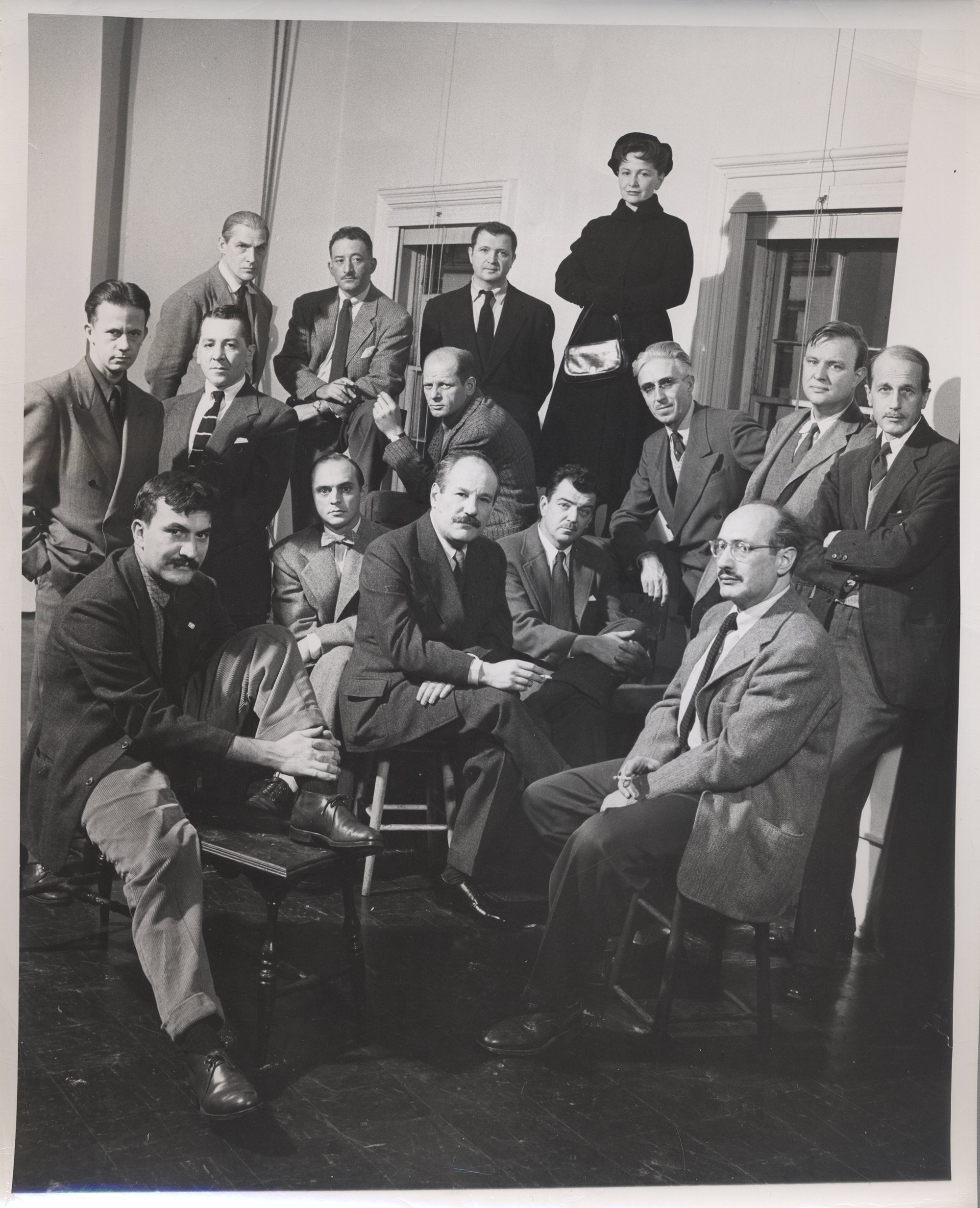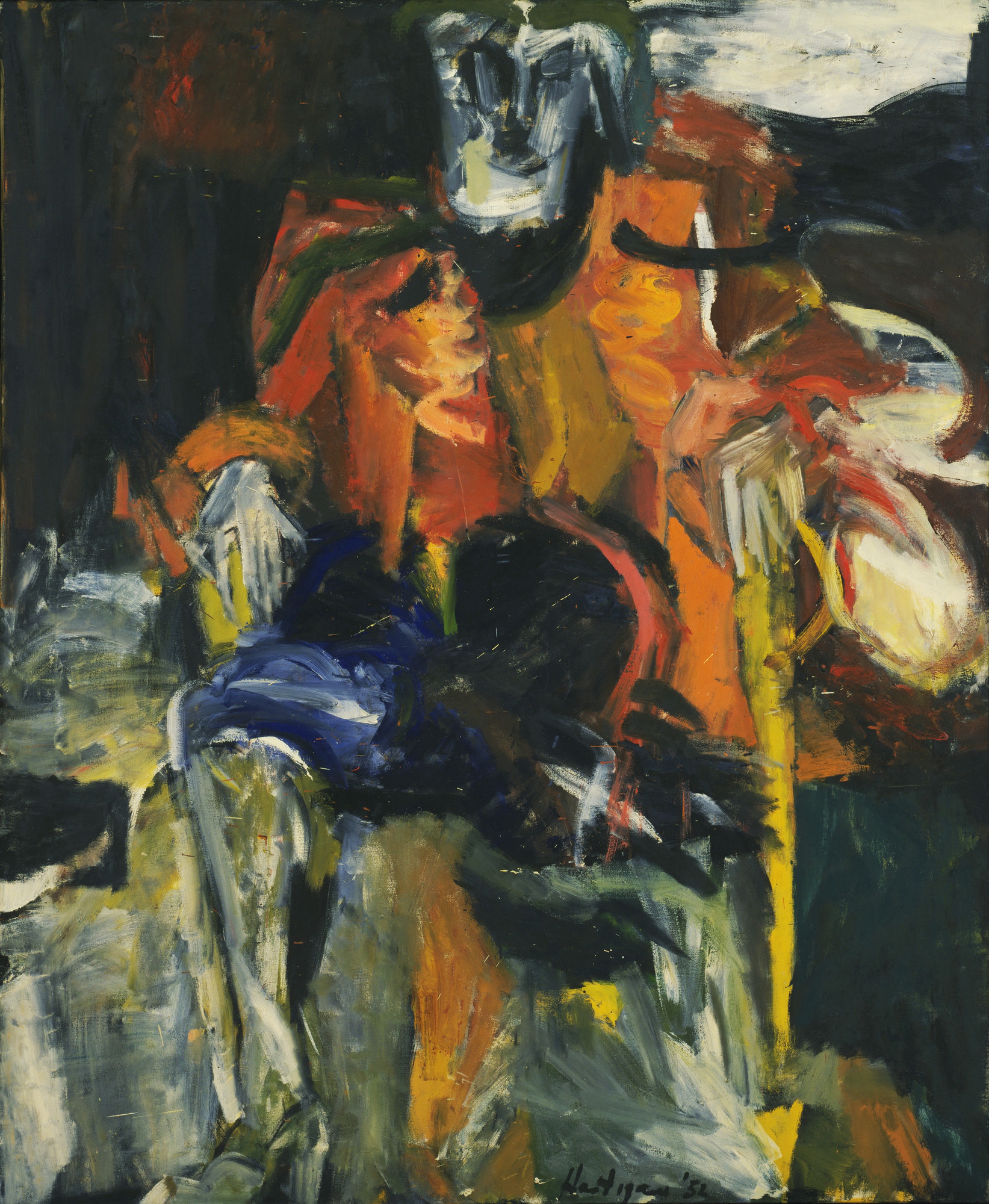Energetic, progressive and expressive. How Abstract Expressionists turned the art scene upside down.
With its exhibition “American Painting Today – 1950”, in 1949 the Metropolitan Museum of Art in New York City proclaimed the expansion of its own collection’s area of focus to include American contemporary art. A national competition was launched and artists were called upon to submit their works to one of the regional juries. The exhibition was intended as a comprehensive stock-take of current artistic trends in the USA and thus aimed to foster interest in the production of art among the American population.
Yet the announcement prompted resistance among some of the young artists approached. Eighteen artists subsequently signed an open letter to the president of the Metropolitan Museum of Art, Roland L. Redmond. The group, which called itself the “advanced artists of America”, quickly became known as “the Irascibles” thanks to an article in the New York Times. They wrote a letter complaining about the composition of the jury, some members of which had expressed negative attitudes towards the abstract “advanced art”, and called for a boycott of the competition.
Now considered the most influential representatives of Abstract Expressionism
The group included Adolph Gottlieb, Barnett Newman, Clyfford Still, Ad Reinhardt, Jackson Pollock, Mark Rothko, Bradley Walker Tomlin, Willem de Kooning, Hedda Sterne, Hans Hofmann and Louise Bourgeois – all of whom are now considered the most influential representatives of so-called abstract expressionism. At the same time, the “Irascibles” were by no means unknown artists in the New York art scene back then either.

The Irascibles, 24.11.1950, Photo: Nina Leen für das Life-Magazin, published January 16th, 1951, Image via www.pacegallery.com
As early as 1943 Jackson Pollock had signed a contract with Peggy Guggenheim’s gallery Art of this Century and was celebrated as “the greatest living painter in the United States,” according to an article in Life Magazine from 1949. Willem de Kooning, Adolph Gottlieb and Hans Hofmann also exhibited regularly in the New York galleries. The art scene in New York was in a state of flux. Ten years earlier, a similar form of resistance had sprung up against another prominent exhibition house in New York City: The Museum of Modern Art had been the target when artist organization American Abstract Artists (AAA) staged a demonstration outside the building to protest the exclusion of abstract art from the exhibition program. The group’s members included Josef Albers, the sculptor David Smith and Lee Krasner, among others.
The artists united their conviction of their own artistic progressiveness
Alongside Krasner, Elaine de Kooning, Grace Hartigan and Helen Frankenthaler were some of the female representatives of Abstract Expressionism. Together with their male colleagues, they presented works in various group exhibitions and made a considerable contribution to establishing abstract painting in the New York art scene.

Josef Albers, Circle, 1933 © VG Bild-Kunst, Bonn & 2019 The Josef and Anni Albers Foundation/Artists Rights Society (ARS), New York/DACS, London, Image via www.tate.org.uk

In 1953 the MoMA purchased Grace Hartigan’s painting “The Persian Jacket” (1952), while de Kooning was writing critiques of her fellow artists’ work for the magazine Art News, and Krasner was a board member of the Artists Union, working with the American Abstract Artists to politically campaign for a fair pay of artistic work.
The foundations for America’s budding Abstract Expressionist movement had been laid in Europe: The geometric interlacing of Cubism had already reduced the subject to something unrecognizable and thus thrown up questions about a mimetic quality in painting. Paul Klee’s poetic game with line and form expanded the pictorial space to infinity, while Kazimir Malevich’s “Black Square” (1915) was considered the zero point of art. The Second World War, the persecution of Jews and the discrediting of modern painting as “degenerate art” resulted in a number of European artists emigrating to the USA – among them André Breton, Hans Hofmann and Marcel Duchamp. What united the artists of Abstract Expressionism was their conviction of their own artistic progressiveness.

Grace Hartigan, The Persian Jacket, 1952 © 2019 Grace Hartigan, Image via www.moma.org
It was impossible either to determine one common style or to find a notion that might pinpoint the diverse and contradictory gestures of the pictorial abstraction that was already emerging in New York as early as the 1930s. What was clear, however, was that painting had shifted away from any representational function. Hence, instead of depicting external reality, the artists emphasized what was inside them and conjured this up on the canvas. Painting became a stage for existential aesthetic questions: What is the function of an image that doesn’t represent anything? How does art communicate emotions? What creative potential is there within the act of painting? Spontaneity, gesture and innovation were behind the thinking and creative work of the abstract artists.
The wild application of color demonstrates a dynamic physical gesture
One of the best-known representatives of Abstract Expressionism is undoubtedly Jackson Pollock. He sprayed, dripped and daubed paint onto gigantic canvases, creating wild tracks and marks that formed an opaque network of differently structured, superimposed surfaces. His wild application of color demonstrated a dynamic physical gesture that is characteristic of Pollock’s painting: In order to be able to apply the paint to his enormous canvases without limitation, he would take the canvas off the easel and place it on the floor of his studio. It was this that enabled him to apply the paint so evenly and energetically, as in his famous “Action Paintings”.

Studio floor used by Jackson Pollock at the Pollock-Krasner House and Study Center in Springs, New York, Image via wikimedia.org

The work becomes the expression of a painterly act. The subconscious, the intuitive movements of the artist, gain greater significance. It’s here that Abstract Expressionism links up to European Surrealism too: With an eye on Salvador Dalí or André Breton, in his “Action Paintings” Pollock experimented with the technique of automatism: Sense, structure and planning are bypassed in order to give scope to the subconscious.
Art becomes a physical experience
Meanwhile, the paintings by Barnett Newman appear much more controlled than Pollock’s work. In his painting “Who’s Afraid of Red, Yellow and Blue IV” (1969/70), the artist contrasts the three basic colors with one another; the garish red color field contrasts with a bright, warm yellow, and the two are separated merely by a narrow dark blue bar, which appears to intervene in the composition and reconciles the contradiction of the colors.

Barnett Newman, Who’s Afraid of Red, Yellow and Blue IV, 1969/70© Barnett Newman Foundation / VG Bild-Kunst, Bonn 2017, Image via www.freunde-der-nationalgalerie.de
The symmetry of the various color fields and the strict composition of the painting balance out the intensity of the colors. This so-called Color Field Painting has left any representationalism far behind it. With this work, Newman references his Dutch artist colleague Piet Mondrian, who emigrated to the USA in 1940. By blowing apart Mondrian’s reduction and clarity, however, Newman strived to achieve a metaphysical effect with his paintings. And the canvas, which measures over six meters, does indeed overwhelm its observers, who find themselves confronted with the intense colorfulness and physical monumentality of the image.
Just how real its power of expression is becomes clear from one incident
Abstract Expressionism is profoundly energetic, powerful and expressive. As the first genuinely American movement, it caused New York to usurp Paris as the most important center of art. Liberated from the readability of figural painting, the presence of the abstract works is fed by the very act of painting and to this day creates a (meta-)physical experience of art. Just how real its power of expression is becomes clear from one incident in particular: On April 13, 1982 a student attacked and damaged Barnett Newman’s “Who’s Afraid of Red, Yellow and Blue IV” at the Neue Nationalgalerie in Berlin. The reason? The painting provoked him.










